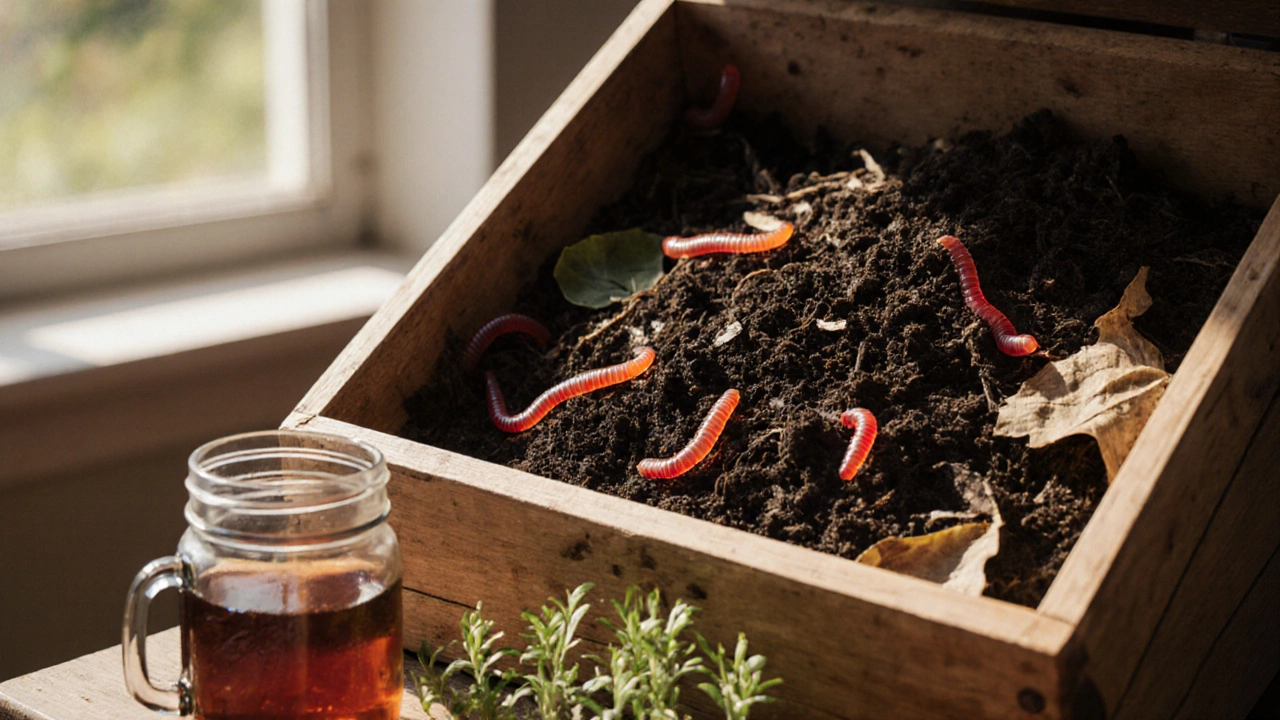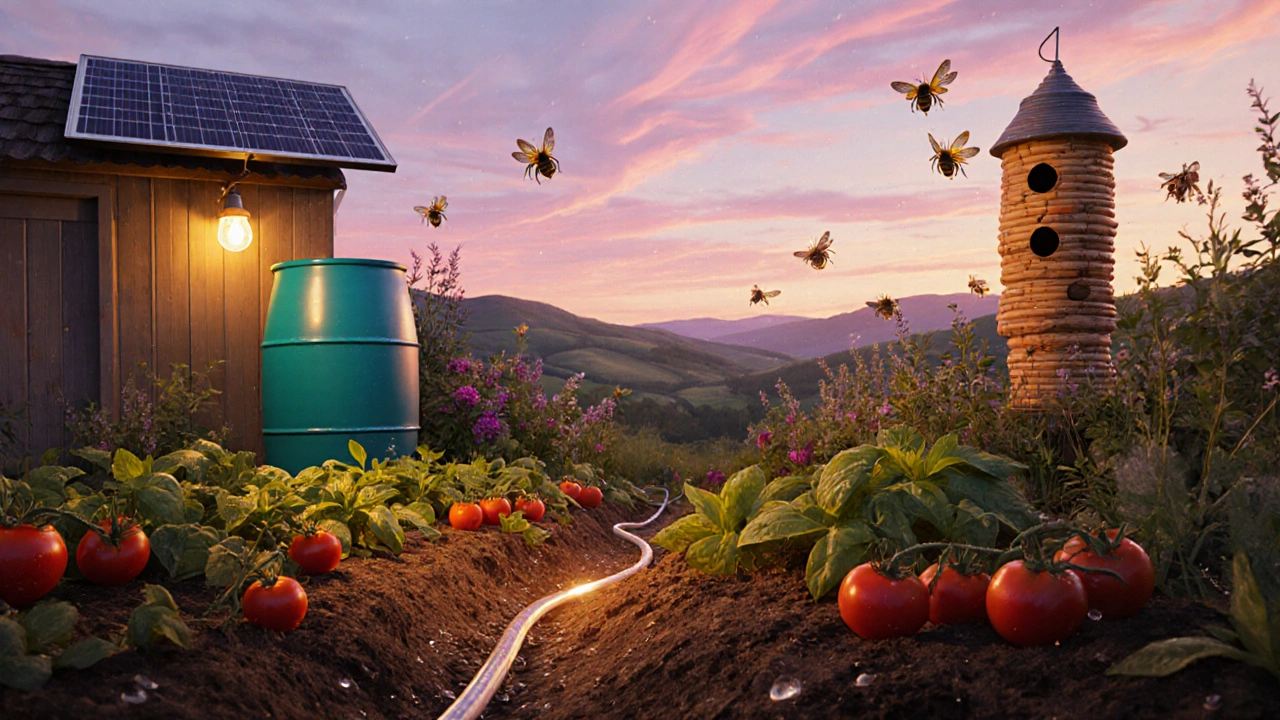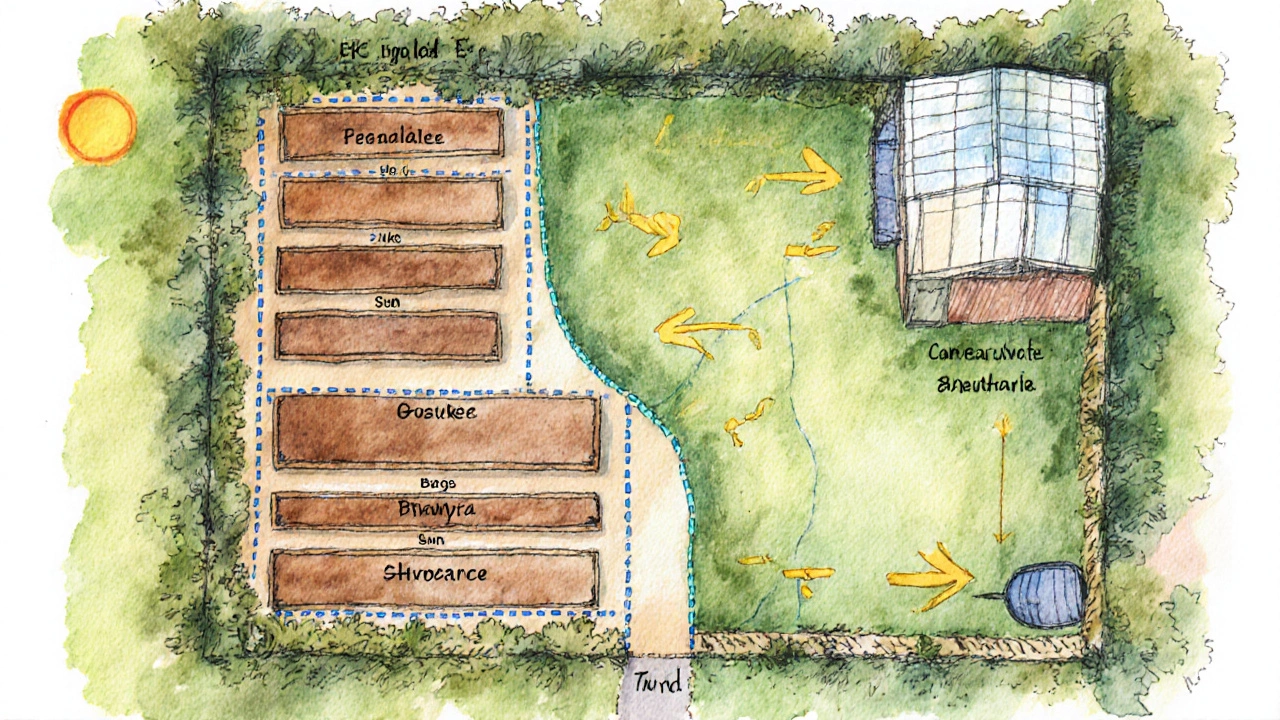Compost Ratio Calculator
How It Works
For healthy compost, maintain a 30:1 carbon-to-nitrogen ratio as recommended in self-sustaining garden systems. Input your kitchen scraps (nitrogen-rich) or dry materials (carbon-rich) to calculate the perfect balance.
Enter your materials to see ideal compost ratios.
Ever wondered how a garden could feed itself, save water, and keep the soil alive year after year? That’s the promise of a self‑sustaining garden. Below you’ll find a hands‑on roadmap that turns a regular plot into a miniature ecosystem that produces food, conserves resources, and needs far less outside input.
Start with a Smart Layout
Before you break ground, sketch the garden’s zones. Use a Garden layout plan is a visual map that shows sun exposure, wind patterns, and water flow. It also helps place elements like raised beds, swales, or a greenhouse where they work best. For a small backyard, arrange taller plants on the north side (in the Northern Hemisphere) so they don’t shade the veggies that need full sun.
Build Living Soil
Healthy soil is the backbone of a self‑sustaining garden. Start a compost bin is a container where kitchen scraps, garden waste, and leaf litter decompose into nutrient‑rich humus. Aim for a carbon‑to‑nitrogen ratio of about 30:1; a quick rule is two parts dry leaves to one part vegetable peelings.
Consider adding vermicomposting - using red worms to accelerate breakdown. The worm castings act like a super‑fertilizer, boosting microbial activity and improving soil structure.
Cover crops such as clover or radish protect the soil from erosion, add organic matter, and fix nitrogen. When you terminate them, they become a green mulch that feeds the soil microbes.
Capture and Reuse Water
Water is often the most limiting resource. Install a rainwater harvesting barrel is a storage tank that collects runoff from roof gutters. A 200‑liter barrel can supply a small vegetable patch for several weeks during dry spells.
For larger sites, shape swales - shallow, broad ditches that slow water, let it soak into the ground, and recharge the root zone. Swales work especially well on gentle slopes.
Greywater from sinks or washing machines can be redirected to ornamental beds, but make sure you use biodegradable soap to avoid harming plants.

Select Resilient, Low‑Maintenance Plants
Prioritise native perennials - they’re adapted to local climate, need less water, and support native pollinators. Pair them with annual vegetables for a continuous harvest.
Practice companion planting - planting species that mutually benefit each other. For example, plant basil next to tomatoes to repel pests and improve flavor.
Use mulch, such as straw or wood chips, to keep the soil cool, suppress weeds, and retain moisture.
Adopt Low‑Energy Irrigation
A drip irrigation system delivers water directly to the root zone, cutting evaporation by up to 60 %. Run the lines on a timer that waters early morning or late evening when evaporation is lowest.
Combine drip with mulch to further reduce water loss. If a drip kit feels too pricey, repurpose old PVC pipe as a simple soaker hose - a classic permaculture hack.
Integrate Renewable Energy and Waste Recycling
Solar garden lights powered by photovoltaic panels add illumination without pulling from the grid. Small, flexible panels can sit on a shed roof and feed low‑voltage LED strips.
Produce compost tea - a liquid fertilizer brewed from steeped compost. It feeds soil microbes and gives plants an extra nutrient boost, especially during fruiting.
Consider making biochar - charcoal added to soil to improve water retention and sequester carbon.

Monitor, Adjust, and Celebrate
Use a simple soil moisture meter to check when the soil is dry at root depth. Record observations in a garden journal: planting dates, yields, pest sightings - this data helps you refine the system each season.Invite pollinators by installing a bee hotel made from stacked wood blocks or bamboo tubes. Healthy pollinator activity signals a balanced ecosystem.
Remember, a self‑sustaining garden is a living project, not a set‑and‑forget plot. Each adjustment brings you closer to a garden that feeds itself, saves resources, and delights the senses.
Water‑Capture Options - Quick Comparison
| Feature | Rainwater Harvesting | Graywater Use |
|---|---|---|
| Source | Roof runoff | Household waste water |
| Typical Storage | 200‑800 L barrels | Direct flow, no storage |
| Legal Restrictions (UK) | Generally allowed | Requires consent, no chemicals |
| Best Use | Vegetable beds, trees | Ornamental beds, lawns |
| Maintenance | Cleaning gutters & barrels | Filter screens, avoid detergent |
Frequently Asked Questions
What is the first step to making a garden self‑sustaining?
Start by assessing your site’s sun, wind, and water patterns, then sketch a layout that places water‑catching features and zones for different plant needs.
How much compost do I need for a 10 m² vegetable bed?
Aim for a 3‑inch (≈7.5 cm) layer. That works out to around 30 L of mature compost, which can be mixed with the existing soil.
Can I use rainwater for indoor plants?
Yes, but filter it first to remove debris. Rainwater is naturally soft and great for most indoor foliage.
Is a drip system worth the cost for a small balcony garden?
For containers under 20 L, a simple soaker hose made from recycled tubing can provide most of the water‑saving benefits at a fraction of the price.
How do I prevent pests without chemicals?
Practice companion planting, encourage beneficial insects with flowering herbs, and use physical barriers like row covers.
What seasonal chores keep the system balanced?
In spring, add fresh compost and plant cover crops. Summer focuses on mulching and monitoring moisture. Autumn is for leaf mulch and preparing beds for winter. Winter tasks include checking rain barrels for frost and planning next year’s crop rotation.

